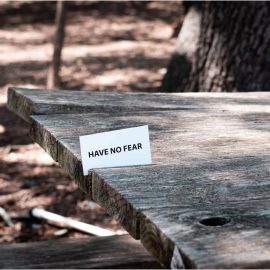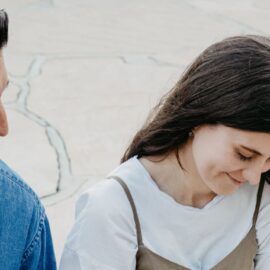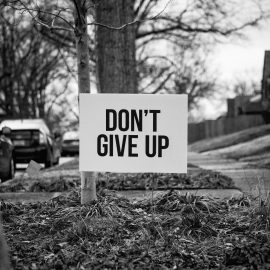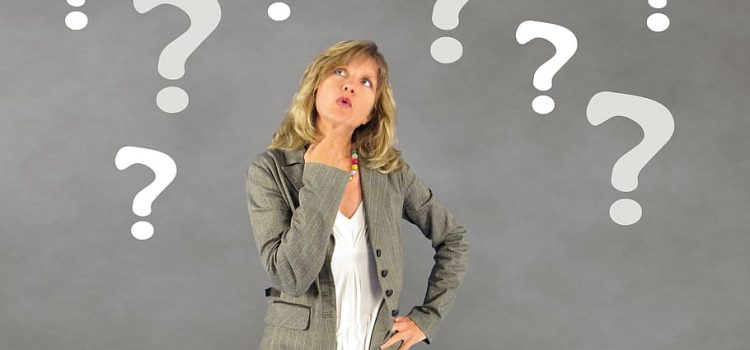
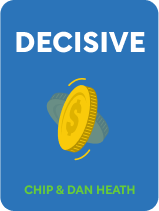
This article is an excerpt from the Shortform book guide to "Decisive" by Chip and Dan Heath. Shortform has the world's best summaries and analyses of books you should be reading.
Like this article? Sign up for a free trial here.
Why do we make bad decisions? What are some ways you can mitigate biases in decision-making?
Life is full of big decisions, but hard-to-detect flaws in our thinking often prevent us from making good choices. According to Dan and Chip Heath, we can make better decisions if we follow a process that pushes us to overcome our decision-making biases and illogical ways of thinking.
Let’s examine how illogical ways of thinking weaken our decision-making.
Why We Need a Better Decision-Making Process
When we make decisions, we typically start by identifying and weighing our options. Then, we pick an option and hope for the best. These steps aren’t a problem in themselves. According to the Heaths, the problem is that we passively allow our biases and irrational ways of thinking to influence each step.
| Different Approaches to the Study of Decision-Making The Heath brothers study decision-making by examining how our cognitive flaws impact our choices. How does their approach to demystifying decision-making compare to that of other authors who explore the psychology of decisions? Some authors focus on the ways culture and society impact individuals’ decision-making. For instance, in The Art of Choosing, social psychologist Sheena Iyengar examines how culture influences the value we place on choice and the choices we make. In The Paradox of Choice, psychologist Barry Schwartz studies how the abundance of choice offered in market democracies impacts our decision-making and well-being. Other authors focus on the ways the human brain processes decisions. Some focus on the power of intuitive decision-making, as Malcolm Gladwell does in Blink. Others study irrational decision-making, as psychologist Daniel Kahneman does in Thinking, Fast and Slow. Decisive falls into this latter category of approaches. The Heaths add to this body of knowledge a decision-making process designed to make our decisions more rational. They don’t spend much time in their book discussing the ways culture and society impact our decisions. |
We’ve organized these cognitive influences into four biases in decision-making. We’ll explain each bias and describe how it compromises our decision-making.
Bias 1: Binary Thinking
When making a decision, we tend to identify and consider only two options. The authors argue that this habit of binary thinking prevents us from developing multiple, potentially better options.
For example, imagine that a retiree is wondering whether to downsize to a smaller home close to family or stay in their beloved current home. They think, “I can either stay or sell.” This either/or framing reflects binary thinking, and they’re missing other viable options. For instance, they could downsize and list their current home as a rental. That way, they could spend time in both places.
(Shortform note: Why do we engage in binary thinking? Recent research in psychology suggests that binary thinking is a “cognitive shortcut” that enables us to efficiently make sense of high volumes of information. We process just two options faster than we would process many.)
Bias 2: Confirmation Bias
The Heath brothers share that once we’ve identified our options, confirmation bias prevents us from accurately evaluating them. Confirmation bias is the psychological term for our tendency to search for and favor information that underscores our existing beliefs. The authors claim that confirmation bias causes us to ignore information that supports our non-preferred options, even if those options are better.
For instance, imagine a man is considering whether to rent a home in Neighborhood A or B. His friend, who lives in Neighborhood A, once told him a harrowing story of a break-in at her house. As he researches the two neighborhoods’ safety, his confirmation bias kicks in. Without realizing it, he searches for information that supports his hunch that Neighborhood A is unsafe. He doesn’t seek out information about safety in Neighborhood B. He then chooses Neighborhood B, even though Neighborhood B’s crime rates are much higher.
(Shortform note: Why are we prone to confirmation bias? Like binary thinking, confirmation bias is a “cognitive shortcut” our brain takes to expedite thinking: It’s quicker to collect and evaluate a small sample of information (the information we agree with) versus a large one (many opposing viewpoints). Scholars who study evolutionary explanations for confirmation bias argue that it continues to persist as we evolve because it helps groups problem-solve effectively. Confirmation bias strengthens our conviction in our viewpoints. When people with strong, contrasting viewpoints debate solutions for a problem, the group deeply scrutinizes the problem. The resulting analysis contributes to a better solution, increasing the group’s chances of survival.)
Bias 3: Status Quo Bias
When it’s time to finally make a choice, our bias toward the status quo weakens our judgment. According to the authors, tough decisions elicit intense emotions. These emotions cause us to seek relief in what’s familiar. Thus, we make decisions that resist change, even if change is what we need.
(Shortform note: What intense emotions give us a bias towards the status quo? Researchers claim maintaining our current status allows us to avoid two unpleasant emotions: the discomfort of having too many options and the agony of a tough dilemma.)
The Heath brothers share that our status quo bias comprises two other biases in decision-making The first, called the mere exposure effect, is a bias toward things and situations we’re accustomed to. The second is loss aversion: a bias against choices that lead to loss. When we make a choice, these two biases make us fearful of losing what’s familiar and what we currently have. As a result, we avoid making significant life changes.
| The Relationship Between Social Circumstances and Bias Research suggests that our biases don’t exist in a vacuum. Our social circumstances influence to what degree we feel—and are impacted by—loss aversion and the mere exposure principle. For example, experimental research suggests that wealthy people and people in positions of power experience less loss aversion. For these people, losses feel less painful due to the social and financial safety net that comes with being wealthy. Furthermore, research on the mere-exposure effect suggests a relationship between this bias and racial prejudice. One study found that if you increase a white person’s exposure to Asian and Black faces, they show an increased liking of new faces of Asian and Black people. Since likability impacts behavior, the researchers conclude that efforts to increase white people’s exposure to faces of color—such as in ads and in the media—could reduce racial bias and its harmful consequences. |
Bias 4: Hubris
Finally, a fourth habit kicks in after we’ve made our decision. According to the authors, our hubris—or extreme self-confidence—makes us feel certain in our predictions about a decision’s outcomes. If the outcome is different than we predicted, we’re left surprised and unprepared to deal with it.
Consider the example of a woman who decides to sell her sailboat before she leaves town. She predicts that her luxury boat will sell fast. Confident in her prediction, she doesn’t plan for the possible outcome that it won’t sell. When the market turns out softer than she predicted, she’s left scrambling.
(Shortform note: While the Heath brothers don’t address this explicitly, their inclusion of this step in a process they frame as universally applicable suggests they think of hubris as a mindset that anyone can suffer from, rather than an enduring personality trait that only some of us have. Their view is at odds with some academic work on hubris. For instance, some researchers believe that hubris is an acquired condition associated with possession of power.)

———End of Preview———
Like what you just read? Read the rest of the world's best book summary and analysis of Chip and Dan Heath's "Decisive" at Shortform.
Here's what you'll find in our full Decisive summary:
- Why our minds are wired to make bad decisions
- How biases and cognitive flaws distort your thinking
- A four-step process to improve your decision-making




